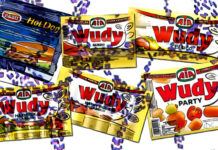Thawed tuna with additives is the subject of a gigantic and systemic food fraud-to date unpunished in the EU, with rare exceptions-that has been going on for at least 5 years.
Member states-Italy, Spain, France, and Sweden especially-have notified Brussels of hundreds of foodborne illnesses associated with consumption of fish slices sophisticated with nitrites and other additives.
The European Commission, however, abandoned work to combat this type of food fraud in 2017, although it is well known and still ongoing. (1) What else to wait for?
Intoxication from adulterated tuna
The intoxication that recurs following the ingestion of adulterated and sophisticated tuna with additives is mackerel syndrome. (2) A reaction to high histamine intakes, in some respects similar to allergy, manifesting with symptoms such as skin redness and itching, dizziness and headache, nausea vomiting and diarrhea.
The RapidAlert System on Food and Feed(RASFF) safety alert system sounds like a war bulletin. To the numerous alert cases for:
– Addition of prohibited additives and/or treatments (e.g., nitrites, carbon monoxide),
– additives in amounts significantly above the permissible limits (e.g., ascorbic acid),
– Illegally caught and/or untraced fish,
– Goods not stored at prescribed temperatures,
notifications for serious risk of poisoning onthawed tuna (thawed tuna) with histamine are added. The only alerts in the latter category recorded in the last 12 months follow.
RASFF, one-year alert for serious risks on thawed tuna and histamine
– 7.7.21, Italy notification on yellowfin tuna arriving from Spain(2021.3572),
– 28.6.21, alert from France on Sri Lankan tuna also distributed in Belgium, Switzerland, Germany, Ireland(2021.3386),
– 7.6.21. Notification Italy, product also distributed in Croatia, Germany, Greece, Poland, Romania, Slovenia
(2021.2933),
– 7.4.21. Notification Sweden, poisoning by tuna loins from Vietnam also sold in Finland and the Netherlands(2021.1719),
– 17.3.21. Holland notification on histamine and cadmium from tuna arriving from Pakistan (actually better known for heavy metals than the sea(2021.1385),
– 1.3.21, Germany notification on Thai tuna(2021.1039),
– 26.2.21, Italy notification on tuna loins from Vietnam, distribution in Austria, Holland, Sweden(2021.1013),
– 26.1.21, France alert on Maldives tuna(2021.408),
– 21.1.21, notification from Spain on product from India(2021.318),
– 24.12.20, notification from Ireland on thawed tuna from Sri Lanka(2020.6019),
– 18.11.20, UK notification on bluefin tuna from Vietnam(2020.5108),
– 29.9.20, alert from Ireland on Sri Lankan tuna(2020.4004),
– 23.7.20, alert from Sweden on product also sold in Germany, Holland and Poland(2020.3015),
– 6.7.20, notification of France on thon of Ivory Coast(2020.2746).
Tuna fraud. Modus operandi
Thousands of intoxications (often undiagnosed and unrecorded) and hundreds of food frauds on a high-value seafood product can be traced back to a single modus operandi, with rare exceptions. Tuna subject to adulteration is tuna caught inpurse seines (purse seine).

Vessels that resort to it, in addition to causing severe stress to tuna and other species (e.g. sharks, dolphins, etc.), they immerse the catch in a hypersaturated salt solution (brine) at -9°C. An exception to the general rule (freezing at – 18°C on freezer vessels) allowed for products intended for the fish canning industry only. (3)
Crooks sophisticated this tuna with illegal additives and treatments to correct its color (from brown to red) and distribute it as fish intended for end consumers instead of the canning industry. And this is how ‘canning grade tuna’ is disguised as ‘sashimi grade tuna‘. But histamine, which develops in improperly stored fish, lurks.
EU Food Fraud Network, 2017
In 2017, the European Commission-following repeated alerts as early as 2016 for mackerel syndrome associated with the consumption of thawed tuna-had activated the EU Food Fraud Network. And the European network, in which member state inspection authorities participate, had developed a vademecum(Tips for inspections) to combat this type of fraud. (4)
Origin and traceability of tuna and boat are the first information to be collected. (5) All vessels, it is recalled, must be approved and registered in appropriate EU lists. It is therefore necessary to trace the catching vessel by electronic logbook (or logbook printout) for EU vessels, catch certificate (issued by the authorities of the non-EU country where the vessel is registered and approved) for imported products.
Tips for inspections. Vessel verification
Verification of the vessel’s freezing capacity (-18 °C) can be done by entering its name in the Marine Traffic website. Few EU-approved deep-sea fishing vessels(longliners) are equipped to freeze tuna at temperatures between -25° and -50/60 °C. Most vessels(purse seiners), which store only in brine (-9 °C), have to send the fish to the canning industry only. (6)
Pricing and visual examination
Tips for inspections compiled by the EU Food Fraud Network indicate the average price of tuna with industrial fate in 2017 to be around €7.5-10/kg. That is, almost half of the frozen(ultrafrozen) or thawed product in good order (12-20 €/kg).
Visual examination of the whole fish then allows us to distinguish, as appropriate:
– Frozen or refrigerated tuna. It has an even surface with lots of ice. The mouth is open, dry and more uniform,
– Tuna stored in brine at -9 °C shows external damage and fins in poor condition, in frost.
The original color of tuna destined for the canning industry is brown, due to too slow freezing or storage in brine at -9°C.
Tuna fraud, the color change
Food additives are often used in fraud to change the color of tuna. This activity qualifies as adulteration of the food and is expressly prohibited by the European legislator, precisely because it serves to confuse the consumer about the characteristics of the product (EC Reg. 1333/08, Art. 6.1.c).
The fraudulent tuna steaks, which are dark brown in color, are disguised as red by injecting various additives. Tuna destined for the industry, following dye treatment, is sold on the various channels (large-scale retail and traditional distribution, HoReCa – Hotel, Restaurant, Catering) as if it were fresh or thawed tuna.
Authorized antioxidants
The only additives permitted in tuna as unprocessed fish, with the sole antioxidant function, are ascorbates (E 300-303) and citrates (E330 -333). (7) To the extent quantum satis (q.s.), that is, at a level not exceeding that necessary to achieve the purpose set for the category of ‘antioxidants’ (8) and provided that the consumer is not misled.
EFSA(European Food Safety Authority) re-evaluated the conditions of use of ascorbic acid, sodium ascorbate and calcium ascorbate (E 300-302), in 2015, based on information regarding their actual levels of use in foods in the EU. As a result of its assessment, EFSA estimated the average occurrence of ascorbates at 100 mg/kg and defined their maximum use level as 300 mg/kg. (9)
Prohibited additives and treatments. Check-list for inspections
Treatments of unprocessed fish with nitrites/nitrates-or additives, or even ‘functional’ plant ingredients that contain significant levels of nitrites or nitrates- and/or carbon monoxide are strictly prohibited and qualify as food adulteration activities. The EU Food Fraud Network ‘s Tips for insp ections recommend that inspection bodies check the following:
– color changes (which q.s. antioxidants, <300 mg/kg, are insufficient to accomplish),
– Presence of unauthorized additives in storage facilities,
– Invoices from additive suppliers (unauthorized additives and/or antioxidants in disproportionate amounts),
– Presence of nitrites and/or nitrates in the salt,
– Presence of injection or churning machines,
– antioxidants in concentrations above 300 mg/kg,
– Vacuum-packed tuna with ‘suspicious’ liquids (to be analyzed),
– Verification of the treatments indicated in the self-control manuals (GMP, HACCP).
From Opson VII (2018) to the present
OPSON-from the Greek ὄψον, dish-is an international initiative, coordinated by Europol and Interpol, that aims to encourage supervisory authorities to cooperate in combating food fraud. (10) In 2018, authorities in 11 European countries (Spain, Italy, France, Germany, Portugal, the Netherlands, the United Kingdom, Hungary, Liechtenstein, Norway, and Switzerland) participated in Operation Opson VII, which resulted in the seizure of 51 tons of outlawed thawed tuna, including 45 tons in Spain alone. (11)
The exercise had important symbolic value, but fraud on defrosted tuna is still serious–because of food safety implications–and extremely widespread. Therefore, the recurrence of notifications to the RASFF system demonstrates the need to address food fraud in the EU with the appropriate tools. Not the ‘cultural center‘ established just in 2018 by former Commissioner Vytenis Andriukaitis, but a European reform fit for purpose (12,13).
Not forgetting-even in the Farm2Fork strategy-resources for veterinarians and official inspectors that have been lost track of. (14)
Dario Dongo
Notes
(1) Dario Dongo. Thawed tuna steaks, poisoning cases in Italy. GIFT(Great Italian Food Trade). 7.6.21, https://www.greatitalianfoodtrade.it/ristorazione/tranci-di-tonno-decongelato-casi-di-avvelenamento-in-italia
(2) Katharina Hofer, Katharina Schenk-Jäger, Cornelia Reichert (2018). Mackerel syndrome, a particular fish poisoning. Toxinfo Suisse. https://toxinfo.ch/sindrome-sgombroide-una-particolare-intossicazion
(3) ‘Where freezing in brine of whole fish intended for canning is practiced, a temperature of not more than -9°C must be achieved for the product. The brine must not be a source of contamination for the fish.’ (Reg. EC No 853/04, Annex III, specific requirements. Section VIII, fishery products. Chapter I, requirements for vessels. All. II. D. Requirements for factory vessels. Point 7)
(4) EU Food Fraud Network. Coordinated case. Illegal treatment of tuna, from canning grade to sushi grade. European Commission, September 2017. https://ec.europa.eu/food/system/files/2018-04/food-fraud_succ-coop_tuna.pdf
(5) Marta Strinati, Dario Dongo. Traceability of canned tuna. IUUWatch’s pressure on the European Commission.. GIFT (Great Italian Food Trade). 18.2.21, https://www.greatitalianfoodtrade.it/consum-attori/tracciabilità-del-tonno-in-scatola-la-pressione-di-iuuwatch-sulla-commissione-europea
(6) Other differences between longliners and purse seiners concern the fishing gear, as well as the daily catch and volume of fish in a sea trip (50-150 vs. 500-900 t), and how the catch is discharged.
When in doubt about the boat’s ability to freeze, inspectors can refer to their country’s AAC (Administration, Assistance and Cooperation) point of contact to make a request to the state where the boat is registered. For non-EU states, the request can be addressed to the European Commission, DG SANTE
(7) Reg. EC 1333/08, on food additives. V. Annex II, Part E, category 9.1.1. Consolidated text as of 12/23/20 at https://eur-lex.europa.eu/legal-content/IT/TXT/?uri=CELEX%3A02008R1333-20201223&qid=1626302785170#tocId63
(8) ‘ Antioxidants’ are substances that prolong the shelf life of foods by protecting them from deterioration caused by oxidation, such as fat rancidity and color changes‘ (EC Reg. 1333/08, Annex I point 4)
(9) EFSA (2015). Scientific Opinion on the re-evaluation of ascorbic acid (E 300), sodium ascorbate (E 301) and calcium ascorbate (E 302) as food additives. EFSA Journal 2015;13(5):4087. doi: https://doi.org/10.2903/j.efsa.2015.4087
(10) Operation OPSON. Europol, https://www.europol.europa.eu/activities-services/europol-in-action/operations/operation-opson
(11) Joe Whitworth. 45 tons of frozen tuna seized in Spain because of illegal treatment. Food Safety News. 16.8.18, https://www.foodsafetynews.com/2018/08/45-tons-of-frozen-tuna-seized-in-spain-because-of-illegal-treatment/
(12) Dario Dongo, Giulia Baldelli. Food fraud, an unsolved problem. ‘EU Food Fraud Network’ report. GIFT (Great Italian Food Trade). 4/30/19, https://www.greatitalianfoodtrade.it/sicurezza/frodi-alimentari-un-problema-irrisolto-rapporto-eu-food-fraud-network
(13) Dario Dongo. Fipronil and fraud in the EU, the bluff. GIFT (Great Italian Food Trade). 9/30/17, https://www.greatitalianfoodtrade.it/salute/fipronil-e-frodi-in-ue-il-bluff
(14) Marta Strinati. Official public controls in decline, the BEUC report. GIFT(Great Italian Food Trade). 2.11.19, https://www.greatitalianfoodtrade.it/sicurezza/controlli-pubblici-ufficiali-in-declino-il-rapporto-beuc
Dario Dongo, lawyer and journalist, PhD in international food law, founder of WIISE (FARE - GIFT - Food Times) and Égalité.








